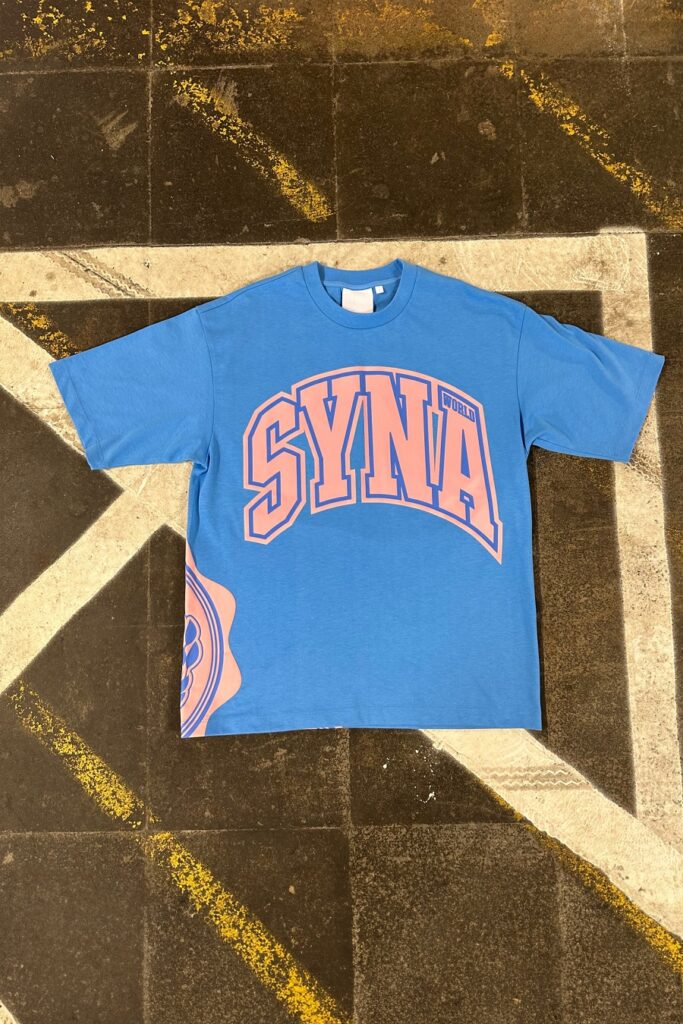
Syna: The Invisible Thread Binding a Modern Myth
Syna is not merely a word; it is a whisper of a myth reborn in the modern age. To speak of Syna is to invite a thousand interpretations, each shaped by the tongues that dare utter it and the hearts that choose to believe. Some say Syna is a brand. Others say it is a movement, a collective promise, a silent revolution in fabric and identity. But beneath the surface, Syna is a story—a living narrative that threads the ancient longing for connection with the urgency of our fractured now. It is not just about what you wear or where you gather; it is about what it means to belong when the world feels cold and indifferent. Syna breathes life into that idea, stitching together communities with threads of creativity, audacity, and something more elusive: a sense that here, you are seen.
The mythology of Syna begins not with a product on a shelf but with an idea that escaped the prison of commerce. It was born in whispers on social media, cryptic drops, and word-of-mouth gospel passed from street corner to street corner. The more secretive it felt, the more real it became. In a digital world drowning in noise, Syna stood out by being deliberately obscure—an inside joke between those brave enough to ask the question: What is Syna? And in asking, they found each other.
The Fabric of Dreams: How Syna’s Materials Tell a Story
To the untrained eye, a Syna garment might look like just another piece of streetwear—clean lines, muted colors, understated logos. But for the believers, each piece is a talisman. The cotton is not merely cotton; it is a promise of longevity and care. The stitching is not merely functional; it is a symbol of the bond between maker and wearer. Syna’s artisans obsess over details invisible to the casual glance. The weight of the hoodie, the feel of the lining, the stretch of the cuff—these are messages in a secret language known only to the faithful.
What sets Syna apart from the countless brands that flirt with luxury and flirt harder with hype is its relationship with materiality. The materials are not a backdrop for branding—they are the narrative itself. Organic, ethically sourced fabrics speak to a new generation that will no longer settle for fast fashion’s empty glamour. Each collection is produced in limited runs, not merely to manufacture scarcity, but to preserve intimacy. When you wear Syna, you are not buying a commodity; you are becoming part of a continuum of craft, consciousness, and care.
A Community Draped in Mystery
There is no Syna without its people. The brand—if we can still call it that—has managed to cultivate an aura of inclusion built paradoxically on exclusivity. Early adopters remember the cryptic Instagram posts that hinted at drops without ever fully revealing them. They remember the DM invites to secret pop-ups in abandoned warehouses, the QR codes hidden on the streets like urban runes leading to the next gathering. This is not marketing in the traditional sense; it is ritual.
Inside this community, one finds an unlikely intersection of styles and souls. There are skaters and stylists, poets and designers, students and tech entrepreneurs. They are all drawn by the promise that wearing Syna means more than looking good; it means you stand for something larger than yourself. The irony, of course, is that no one can quite articulate what that ‘something’ is. And yet, in the ambiguity lies the power. Syna’s community thrives on the notion that meaning is made, not given. In wearing Syna, each person adds a new verse to the myth.
Syna and the New Luxury: Why Less Is Always More
In a world where luxury often means opulence and logos large enough to see from a satellite, Syna’s restraint is radical. The logo is never brash; the branding never shouts. Instead, it whispers. A subtle patch here, an embroidered symbol there. If you know, you know. This refusal to pander to the loudness of modern consumerism is itself a rebellion. Syna says: you do not need to scream to be heard by those who matter.
This philosophy extends to the way collections are released. There is no endless supply, no clearance rack. When a piece sells out, it is gone. The scarcity is real and intentional, a reminder that true luxury is not about excess but about essence. The result is a bond between wearer and garment that feels almost sacred. People cherish their Syna pieces not because they are expensive—though they often are—but because they feel rare, earned, and profoundly personal. In this way, Syna redefines luxury as something you do not flaunt to strangers but share quietly with fellow believers.
Streetwear, but Make It Sacred
The street has always been the birthplace of true style revolutions, and Syna World knows this intimately. But where other brands mine street culture for profit, Syna treats it as a living altar. Its designs nod to hip-hop, skate culture, urban grit, and even monastic simplicity. A Syna tracksuit might look like it belongs in a 90s Bronx cipher, yet its cuts and fabrics are modern, ethical, and designed for longevity. The blend is hypnotic: ancient codes of rebellion reimagined for a generation desperate to stand out without selling out.
In this sense, Syna is less about the clothes and more about the way they make you walk through the world. There is an unmistakable shift in posture when someone wears Syna. It is confidence, yes, but also a quiet recognition that you are part of a lineage that values depth over spectacle. You do not just wear Syna—you inhabit it. It is a second skin for those who find their truest selves on cracked pavements and midnight rooftops.
Beyond Clothing: Syna as Cultural Incubator
As the myth grows, so does Syna’s ambition. What began as cryptic drops of hoodies and sweats is now a multi-layered exploration of art, music, and storytelling. Syna-funded zines circulate in niche coffee shops and art collectives, filled with essays and poems that echo the brand’s ethos of ambiguity and connection. There are rumored collaborations with underground musicians, guerilla performances in urban spaces, and one-off art installations that vanish as quickly as they appear. These acts are never announced with the fanfare you would expect from a traditional brand. Instead, they are discovered by those paying attention, rewarding curiosity and presence.
This expansion into cultural production is not about diversification for profit. It is about creating spaces where the Syna philosophy can breathe outside the confines of fabric. In doing so, Syna becomes less of a label and more of a platform—a sanctuary for creators disillusioned with an art world driven by algorithms and attention spans measured in seconds. It is a reminder that some things are worth finding the hard way.
The Future of the Myth: Can Syna Stay Sacred?
As with any myth, the greatest danger to Syna is its own success. The world of hype and high fashion is a hungry machine, always ready to devour what is authentic and spit out a hollow replica. Brands that start as movements often become commodities. Can Syna resist this fate? Can it remain true to its founding principles while expanding its reach?
The answer, perhaps, lies in the community itself. Unlike traditional consumers, Syna’s believers are gatekeepers in the best sense of the word. They guard the ethos by refusing to let it be watered down. They challenge the brand to innovate without betraying its roots. And so far, Syna’s stewards have proven wise enough to listen. They understand that the myth only lives if it keeps evolving, if it keeps refusing to be pinned down by easy definitions.
In an age where so much is disposable, Syna’s insistence on durability—of fabric, of meaning, of community—is its true radical act. It is not a brand you grow out of; it is a myth you grow with.
Why Syna Matters: A Personal Reflection
I remember the first time I saw someone wearing Syna World Tracksuit. It was not at some influencer event or luxury boutique but on a subway platform at 2 AM. The hoodie looked ordinary at first glance, but there was a quiet power in how it was worn. No flex, no performative swagger—just a sense that the person inside it knew something the rest of us did not. I asked them about it, and they just smiled: Syna. That was all they said.
In that moment, I realized what makes Syna different. It is not about clothing as status but clothing as connection. It invites questions instead of offering answers. It leaves room for you to add your own chapter to the myth. And in a world of endless noise and instant gratification, that feels revolutionary.
If you ask me what Syna is today, I would say it is a reminder that the best things in life are hidden in plain sight. You just have to be willing to look closer, to ask questions, to lean in when everyone else pulls away. Syna is a modern myth, yes—but more importantly, it is an invitation to believe that myths still matter.
Final Threads: The Legacy Yet to Be Sewn
As the world hurtles forward, the story of Syna remains unwritten in the best possible way. Its chapters are being authored not by a single founder or marketing team but by everyone who wears it, shares it, and questions it. It is an idea that slips through the fingers of cynicism, defying the logic of spreadsheets and trend forecasts.
Syna stands as proof that even in an era obsessed with instant everything, there is still room for the slow burn, the whispered rumor, the garment passed down like a secret between kindred spirits. Maybe that is the greatest legacy Syna can leave: the knowledge that the invisible threads binding us—fabric, myth, and community—are the only ones that truly matter.
So if you ever find yourself standing in front of a Syna piece—whether in a pop-up, a friend’s closet, or some future archive—pause for a moment. Feel the weight of the fabric, trace the careful seams, and listen closely. You might just hear the myth humming beneath the cotton, calling you to join the story still being told.
